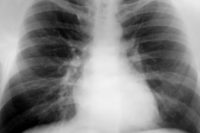Risk of lung cancer death among women rises dramatically
“If women smoke like men, they will die like men”

 Female smokers have a much greater risk of death from lung cancer and chronic obstructive lung disease (COLD) in recent years than did female smokers 20 or 40 years ago, reflecting changes in smoking behavior according to a Special Article published in the New England Journal of Medicine (NEJM).
Female smokers have a much greater risk of death from lung cancer and chronic obstructive lung disease (COLD) in recent years than did female smokers 20 or 40 years ago, reflecting changes in smoking behavior according to a Special Article published in the New England Journal of Medicine (NEJM).
The increase in risk of death from lung cancer and COLD in female smokers has been large enough to completely offset improvements in longevity from medical advances that have reduced death rates in the rest of the population over the last 50 years. In total the study included more than 2.2 million adults 55 years and older.
Women smokers today smoke more like men than women in previous generations, beginning earlier in adolescence and until recently smoking more cigarettes per day (consumption peaked among female smokers in the 1980s).
For women who smoked in the 1960s, the risk of dying from lung cancer was 2.7 times higher than that of never-smokers. In the contemporary cohorts (2000-2010) the risk was 25.7 times higher than that of never-smokers. The risk of dying from COLD among female smokers was 4.0 times higher than that of never-smokers in the 1960s; in the contemporary cohort, this risk increased to 22.5 times higher than never-smokers. About half of the increase in risk of both conditions occurred during the last 20 years.
In male smokers, lung cancer risk plateaued at the high level observed in the 1980s, while the risk of death from chronic obstructive lung disease continues to increase for reasons that are unclear. Men and women smokers in the contemporary cohorts had nearly identically higher relative risks (compared to never smokers) for lung cancer, chronic obstructive lung disease, ischemic heart disease, stroke, and other heart disease. This finding strongly confirms the observed prediction that “If women smoke like men, they will die like men.”
The research also confirmed that quitting smoking at any age dramatically lowers mortality from all major diseases caused by smoking, and that quitting smoking is far more effective than reducing the number of cigarettes smoked. The study found smokers who quit by age 40 avoided nearly all of the excess smoking-related mortality from lung cancer and COLD.
”The steep increase in risk among female smokers has continued for decades after the serious health risks from smoking were well established, and despite the fact that women predominantly smoked cigarette brands marketed as lower in ’tar’ and nicotine,” said Dr. Thun. “So not only did the use of cigarette brands marketed as ’Light’ and ’Mild’ fail to prevent a large increase in risk in women, it also may have exacerbated the increase in deaths from chronic obstructive lung disease in male smokers, since the diluted smoke from these cigarettes is inhaled more deeply into the lungs of smokers to maintain the accustomed absorption of nicotine.”
“The findings from these studies have profound implications for many developing countries where cigarette smoking has become entrenched more recently than in the United States, said Dr. Thun. “Together they show that the epidemic of disease and death caused by cigarette smoking increases progressively over many decades, peaking fifty or more years after the widespread uptake of smoking in adolescence. The good news is the benefits of smoking cessation occur much more quickly and are substantial at any age.”
Looking for a reprint of this article?
From high-res PDFs to custom plaques, order your copy today!





